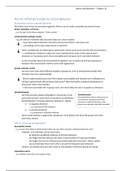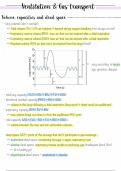Summary
Summary Norms and Behaviors - Chapter 10
- Module
- Institution
- Book
This summary will facilitate your studying a lot as it gives you a clear and comprehensible overview of all the information from the book. Especially students, who memorize better with small visualizations and ordered informational divisions will profit from this little piece of art. ;) Small tip: ...
[Show more]













